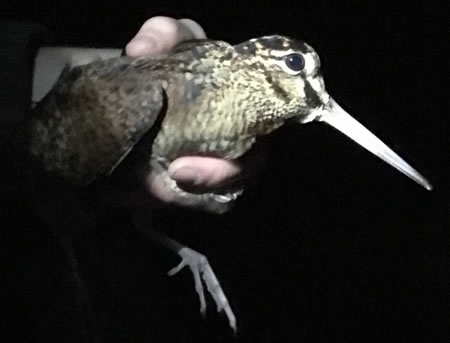By Chris Heward, Wetlands Research Assistant
Firstly, apologies if some of the recent work on the Woodcock Watch website has interfered with its usability. We’ve spent the last few weeks refreshing the Woodcock Watch map; a process which is now complete. This has meant removing some of the older, inactive tags. You’ll find the map now features just four active woodcock.
This includes three woodcock caught in previous years: Nellie III tagged in 2017, Sir John tagged in 2016 and Monkey IV tagged in 2015. All three of these birds were caught in Norfolk, which is odd given the wide range of locations we have tagged birds in recent years. This may just be pure coincidence, but it is also possible that Norfolk experiences slightly sunnier winters than Scotland, Northern England or the Isle of Man and, this being the case, the tag’s solar-powered batteries stand a better chance of remaining charged.

The fourth woodcock featured on the map is a new bird for 2018. She was also tagged in Norfolk. Her name is ‘Holkham’ which gives some clue as to where we caught her. We think she is probably in her second winter (hatched 2016) because she has a mix of fresh adult and old juvenile feathers.
Since being tagged in late January, we have seen Holkham make some localised movements in North Norfolk but no sign of migration yet. She has not transmitted for a little while, so it is entirely possible that the next time we hear from her, she will be somewhere on the continent.
Sir John is already in mainland Europe. We’ve had a few low-quality transmissions that imply Sir John has been back in Norfolk at some point this winter. But he’s currently sending accurate transmissions from a site in north-west Germany somewhere between Münster and Hanover. We’ve received multiple transmissions from this location, over a series of days, suggesting this is a stop-over en-route to his Russian breeding site.
If your favourite woodcock has been removed from the map, this is probably because we have not received any recent updates. But don’t worry, there is still chance that the bird could transmit – particularly with some sunnier spring weather just around the corner (hopefully).
We’ve retained the profiles of some of the birds most likely to reappear and as soon as they do their place-marker will be reinstated. In the meantime, if you want to observe maps from previous years, please view the bird archive.
Please support our vital woodcock research